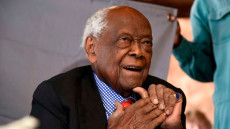- Historically, the significance associated with nose rings has been different across cultures around the globe. From South Asia, where they symbolize marriage and femininity, to African tribes, where they often denote social status, this small piece of jewellery has carried weight far beyond its size.
- In modern times, however, nose rings have shifted into a symbol of individuality and rebellion, popularized by counterculture movements and embraced by celebrities worldwide.
As the world evolves, fashion has not been left behind as accessories; the definition and perception of beauty have drastically changed. In the recent trends in fashion and self-expression, nose rings have maintained a distinctive place. What was once a cultural and religious symbol in many societies has become a mainstream accessory that transcends tradition and trend.
Historically, the significance associated with nose rings has been different across cultures around the globe. From South Asia, where they symbolize marriage and femininity, to African tribes, where they often denote social status, this small piece of jewelry has carried weight far beyond its size.
In modern times, however, nose rings have shifted into a symbol of individuality and rebellion, popularized by counterculture movements and embraced by celebrities worldwide.
Critics of the trend argue that nose rings can be polarizing in professional and conservative environments. On the other hand, supporters see nose rings as a celebration of diversity and a tool for breaking societal stereotypes.
The jewellery industry has also taken notice, offering a wide range of options, from minimal studs to ornate rings, catering to both traditional and contemporary tastes. This accessibility has only fueled their popularity, making nose rings a unifying trend across generations and cultures.
As opinions remain divided, one thing is clear: nose rings are here to stay, continuing to evolve as both a statement of personal identity and a nod to rich cultural traditions. Whether embraced or debated, they remain a fascinating example of how history and modernity often intersect in fashion.







-1732023080-md.jpg)




